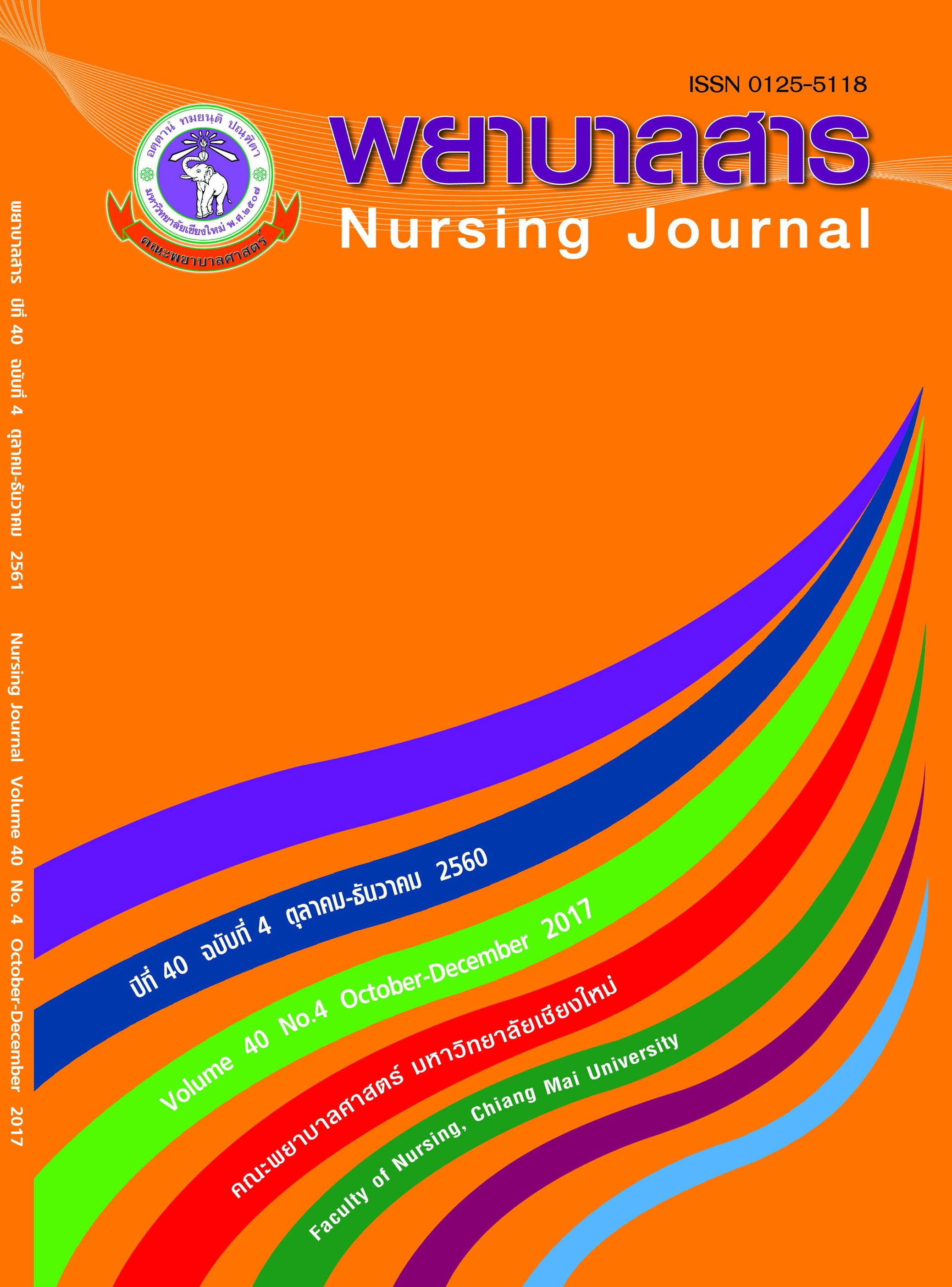Breast Massage for Promoting Milk Production and Milk Ejection
Keywords:
breast massage, milk production and milk ejection, insufficient milk supplyAbstract
Breastmilk is full of essential nutrition which is necessary for both physical and mental improvement of the infant. Breastfeeding also supports the mothers both individual and social around them. But there are still many lactating mothers who provide insufficient milk supply for their baby. Breast massage technique is an effective alternate to promote the increasing of milk production and milk ejection. The breast massage will help the flow of the breast milk by stimulating the mammary glands, promotes circulation of blood and lymphatic system. It can stimulate the oxytocin hormone secretion which cause the let-down reflex. For the breast massage method from the literature review, there are three methods: Oketani breast massage, 6-basic postures, and Self Mamma Control Method (SMC). Breast massage allows breasts and areola to be soften, the baby can fully keep the nipple in their mount. This will encourage effective breastfeeding, will activate prolactin hormone to continuously increasing milk production and mother’s perception that the baby is taking enough milk and increase the breastfeeding rate.
References
จิรนันท์ วีรกุล. (2557). ปัจจัยที่มีความสัมพันธ์ต่อความสำเร็จในการส่งเสริมการเลี้ยงลูกด้วยนมแม่อย่างเดียวนาน 6 เดือนในโรงพยาบาลมหาวิทยาลัยนเรศวร. สืบค้นจาก http://www.conference.nu.ac.th.
ชุติมาพร ไตรนภากุล, มณฑา ไชยะวัฒน, วิวัฒน คณาวิฑูรย์, รัชกร เทียมเท่าเกิด, สุวรรณี นาคะ, วิมล มิตรนิโยดม และสุธารัตน์ แป้นลาภ. (2553). ผลของการไหลของน้ำนมในหญิงหลังคลอดที่ถูกนวด-ประคบเต้านมด้วยกระเป๋าน้ำร้อนและลูกประคบสมุนไพร. วารสารการพยาบาลและการศึกษา, 3(3). 75-79. สืบค้นจาก https://www.tci-thaijo.org/index.php/JNAE/article/view/1843
ฐิติชาณัฐ กางการ พรรณรัตน์ แสงเพิ่ม และไข่มุก วิเชียรเจริญ. (2557).ผลของโปรแกรมกระตุ้นน้ำนมต่อปริมาณน้ำนมมารดาของทารกแรกเกิด. วารสารเกื้อการุณย์,21,205-218.
เพ็ญประภา ฤทธิสิทธิ์ และศศิธร ภัคดีโชติ. (2552). ผลของการใช้โปรแกรมกระตุ้นหลั่งน้ำนมในมารดาหลังผ่าตัดคลอด โรงพยาบาลสกลนคร. วารสารโรงพยาบาลสกลนคร,12(3), 25-34. สืบค้นจาก www.digitaljournals.org/pubnetmoph/e_doc.
อังศนา วงศ์ศิริ. (2554). การนวดเต้านม: วิถีแห่งการเพิ่มน้ำนม. เอกสารประกอบการประชุมนมแม่แห่งชาติ ครั้งที่ 4.สืบค้นจาก http://www.resource.thaihealth.or.th/library/academic/
Alden, K. R. (2006). Newborn nutrition and feeding. In D. Lowdermilk, & J. Perry (Eds.). Maternity
nursing (pp.617-647). St Louis: Mosby Elsevier.
Bolman, M., Saju, L., Oganesyan, K., Kondrashova, T., & Witt, A. M. (2013). Recapturing the art of therapeutic breast massage during breastfeeding. Journal of Human Lactation, 29(3), 328-331.
Brown, C. R., Dodds, L., Legge, A., Bryanton, J., & Semenic, S. (2014). Factor influencing the reasons why mothers stop breastfeeding. Canadian Journal of Public Health, 105(3), 179-185. Retrived from http://journal.cpha.ca/index.php/cjph/article/view/4244
content/pdf/bcr3138.pdf
Danforth, K. N., Tworoger, S. S., Hecht, J. L., Rosner, B. A., Colditz, G. A., & Hankinson, S. E. (2007). Breastfeeding and risk of ovarian cancer in two prospective cohorts. Cancer Causes Control, 18, 571-523. doi: 10.1007/s10552-007-0130-2
Foda, M. I, & Oku, T. (2008). Change in milk protein of lactating mothers following breast massage. International Journal of Dairy Science, 3(2), 86-92.
Foda, M. I., Kawashima, T., NaKamura, S., Kobayashi, M., & Oku, T. (2004). Composition of milk obtained from unmassaged versus massaged breasts of lactating mothers. Journal of Pediatric Gastroenterology and Nutrition, 38(5), 484-487.
Gatti, L. (2008). Maternal perceptions of insufficient milk supply in breastfeeding. Journal of Nursing Scholarship, 40(4), 355-363. Retrived fromhttp://onlinelibrary.wiley.com/doi/10.1111/j.
Harlow, B., Cohen, L. S., Otto, M. W., Spiegelman, D., & Cramera, D. W. (2004). Early life menstrual characteristics and pregnancy experiences among women with and without major depression: The Harvard study of moods and cycles. Journal of Affective Disorders, 79(1), 167–176. doi:10.1016/S0165-0327(02)00459-7
Iyengar, S.R., Walker, W.A. (2012). Immune factors in breast milk and the development of atopic disease. Journal Pediatric Gastroenterol Nutrition, 55(6), 641-647 .
Jones, E., Dimmock, P. W., & Spencer, S. A. (2001). A randomised controlled trial to compare methods of milk expression after preterm delivery. Archives of Disease in Childhood Fetal and Neonatal Edition, 85(2), 91-95. doi: 10.1136/fn.85.2.F91
Kabir, N., & Tasnim, S. (2009). Oketani lactation management: A new method to augment breast milk. Journal of Bangladesh College of Physicians and Surgeons, 27(3), 155-159.
Kotsopoulos, J., Lubinski, J., Salmena, L., Lynch, H. T., Kim-Sing, C., Foulkes, W., Ghadirian P.,… Blum, J. (2012). Breastfeeding and the risk of breast cancer in BRCA1 and BRCA2 mutation carriers. Breast Cancer Research, 14, 1-7. Retrieved from http://www.biomedcentral.com/
Lawrence, R. A., & Lawrence, R. M. (2011). Breastfeeding a guide for the medical profession (7thed.) St.Louis: Mosby Elsevier.
Sankanagoudar, P. P., Patil, C. B., & Sirigeri, K. (2011). Effect of therapeutic non-thermal ultrasound on post-partum symptomatic breast engorgement. Indian Journal of Physiotherapy & Occupational Therapy, 5(2), 108-133. Retrieved from http://www.indianjournals.com/ijor.aspxtarget
United nations children’s fund [UNICEF]. (2012). ความเหลื่อมล้ำ ช่องว่างปัญหาเด็กและสตรี: ผลสำรวจสถานการณ์เด็กและสตรีในประเทศไทยที่สำคัญ พ.ศ. 2555. สืบค้นจาก http://www.unicef.org/thailand/tha/
World Health Organization [WHO] and UNICEF. (2009). Baby-friendly hospital initiative revised, updated and expanded for integrated care: Section 2 strengthening and sustaining the baby-friendly hospital initiative: A course for decision-makers. WHO Library Cataloguing-in-Publication Data. Retrieved from http://www.unicef.org/nutrition/files/ BFHI_section_2_2009_eng.pdf
World Health Organization [WHO]. (2009). Infant and young child feeding: Model chapter for textbooks. Retrieved from http: // www.who.int/inf.htm
World Health Organization [WHO]. (2014). World health statistic. Retrieved from http://apps.who.int/iris/bitstream/10665/112738/1/9789240692671_eng.pdf
Downloads
Published
How to Cite
Issue
Section
License
บทความที่ได้รับการตีพิมพ์เป็นลิขสิทธิ์ของวารสารพยาบาลสาร
ข้อความที่ปรากฏในบทความแต่ละเรื่องในวารสารวิชาการเล่มนี้เป็นความคิดเห็นส่วนตัวของผู้เขียนแต่ละท่านไม่เกี่ยวข้องกับมหาวิทยาลัยเชียงใหม่ และคณาจารย์ท่านอื่นๆในมหาวิทยาลัยฯ แต่อย่างใด ความรับผิดชอบองค์ประกอบทั้งหมดของบทความแต่ละเรื่องเป็นของผู้เขียนแต่ละท่าน หากมีความผิดพลาดใด ๆ ผู้เขียนแต่ละท่านจะรับผิดชอบบทความของตนเองแต่ผู้เดียว






